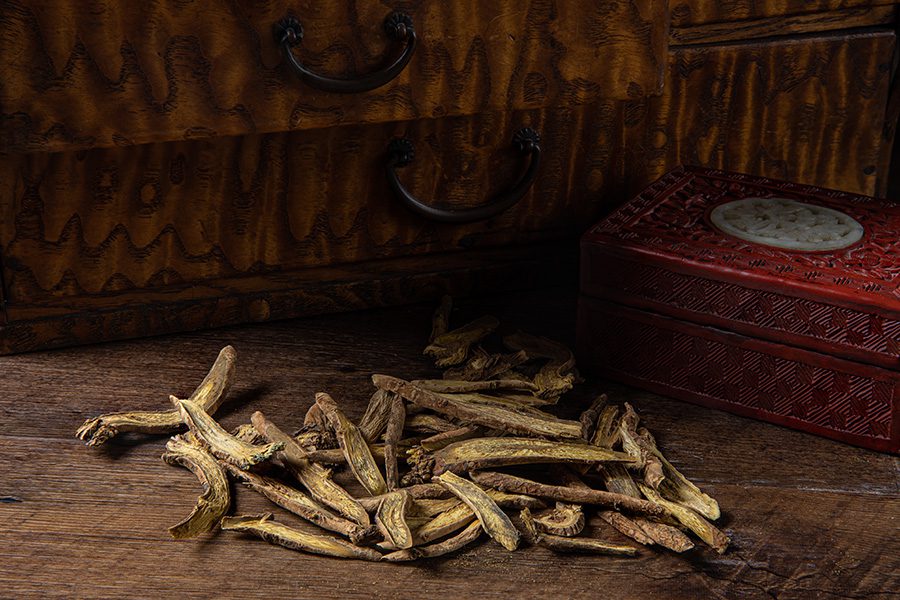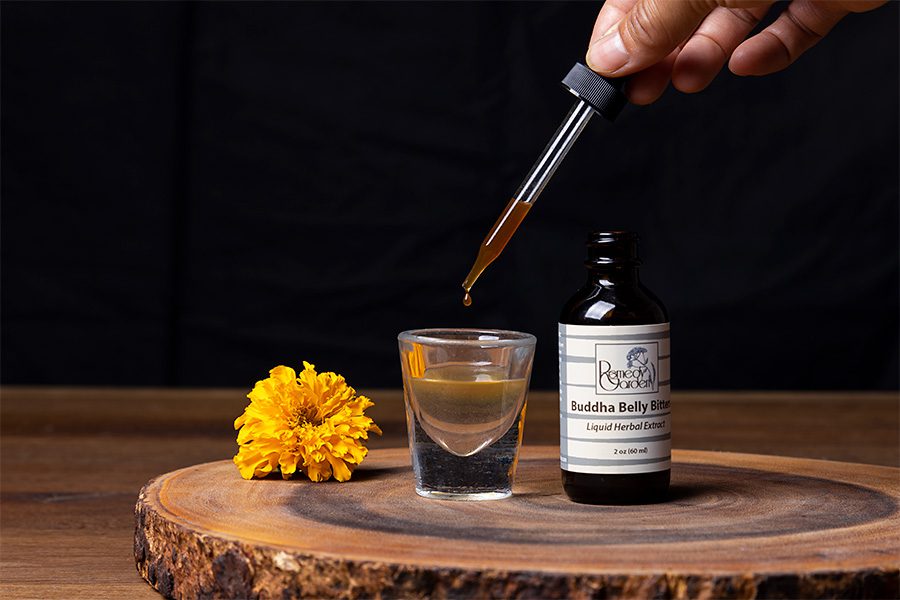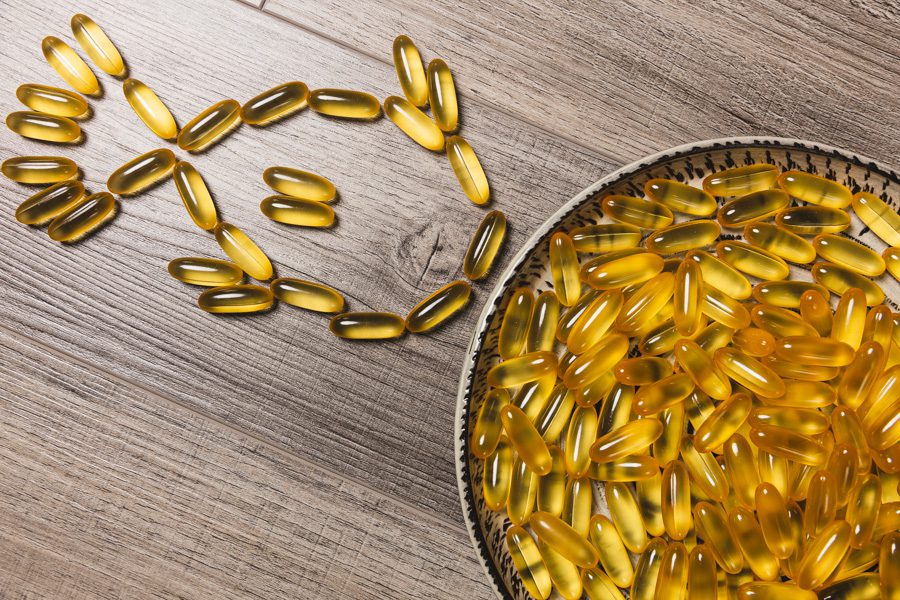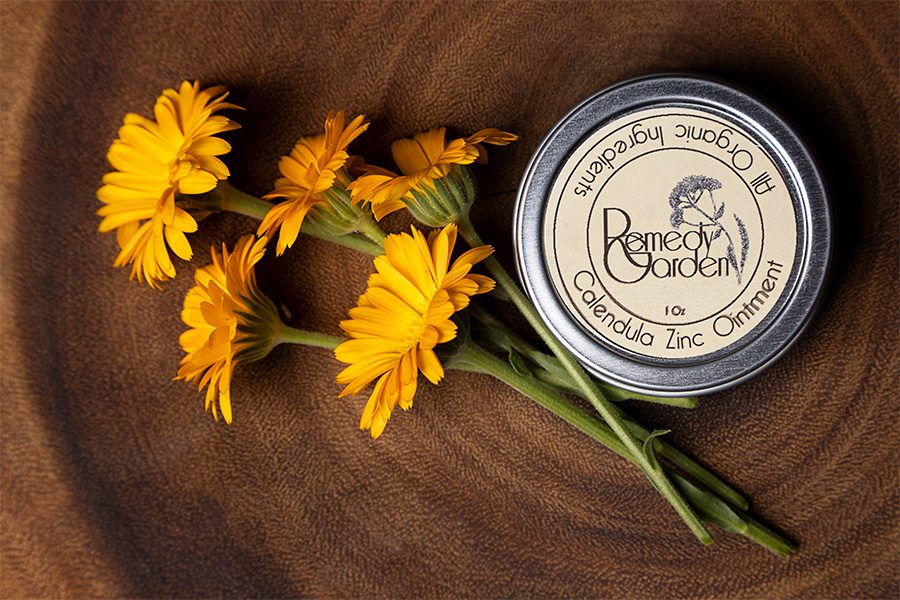Eczema: what is it?
Eczema (also known as atopic dermatitis) is a common condition that affects 10-12% of the population and occurs predominantly in children under 5 years of age. Eczema is an allergic response that appears on the skin as a red, itchy rash. It can be triggered by numerous factors and thorough investigation is needed to uncover the root of the problem. Finding the offending allergen is just the first step in healing eczema and a comprehensive protocol that addresses environment, diet, inflammation, gut healing, digestion and immunity will ensure it does not recur.
The problem with the conventional treatment of eczema is that symptoms are targeted without identification or treatment of the underlying cause. In this article I will outline five steps to healing eczema naturally from the inside out. Suggestions for diet, herbs, lifestyle and supplements are given with the understanding that, there is no such thing as a “one size fits all” approach and best results will occur if you seek the help of a qualified holistic health care practitioner who can tailor the treatment to your individual case.

Why Topical Creams Are Not The Answer.
The characteristic symptom of eczema is an intensely itchy, sometimes dry and sometimes oozy rash. In babies, eczema commonly appears on the face, but eczema can appear on the creases of the arms, behind the knees or virtually anywhere on the skin. To address this symptom the number one prescription given by doctors and dermatologists for eczema is topical hydrocortisone cream. Hydrocortisone is a steroid that works to dampen inflammation by suppressing the body’s immune response. Steroid creams work well initially to relieve the itchiness and heal the skin rash- but at what cost?
The long-term use of topical steroid creams can cause side effects such as thinning of the skin and pigmentation. In addition, steroids can be absorbed into the bloodstream through the skin. Systemic steroid use has been linked to wide-ranging side effects such as hypertension, cardiovascular disease, weight gain, diabetes, easy bruising, growth restriction in children and sleep disturbances. Occasional use of the topical cream is unlikely to cause these serious side effects but long-term use is best avoided.
During my own journey with my son’s infantile eczema, I was informed by dermatologists that there is no cure for eczema- only management of the symptoms. Being a naturopath I suspected that something deeper was at play but when I asked about the possibility of diet being a cause of my son’s eczema, I was told that it was highly unlikely. The reductionist view of eczema as “a breakdown of the skin’s ability to function as a barrier” made it difficult for doctors to see the connection between diet on the inside provoking a symptom on the outside.
According to dermatologists, the failure in the skin’s barrier function is only a mechanical problem caused by a lack of ceramide in the stratum corneum (a layer of the skin). Accordingly, cortisone creams, moisturizing creams, ceramide creams and petroleum-based barrier creams are the standard prescriptions for eczema and dermatitis. All these topical applications work with varying success temporarily but until the root cause is addressed, the eczema will invariably flare up and return. Treating eczema with topical creams is like trying to fix structural problems in a house with a coat of paint.
5 Steps to Healing Eczema Naturally From The Inside Out.
If we view eczema as the outer manifestation of something deeper that is out of balance inside the body then we open up the possibility to treat and heal it from the inside out. A truly holistic view of disease addresses the physical as well as emotional and spiritual aspects of imbalance and attempts to support our vital force and our body’s innate healing powers. Furthermore, suppression of symptoms without addressing the underlying cause can drive the imbalance deeper into the body and can manifest as chronic disease later on.
The Protocol for Healing Eczema Naturally From The Inside Out is:
1) Identify and Treat The Underlying Causes
2) Cool The Associated Inflammation
3) Heal the Gut
4) Optimize Digestion
5) Build Immunity
1) Identify and Treat The Underlying Causes
Causes of eczema can be divided into 2 basic sub-classes: external causes and internal causes.
External causes are those that affect your eczema from the outside. These are things like dry air from heating, sweating, hot water from bathing, as well as chemicals found commonly in soaps, cosmetics and body care products. Read labels and opt for gentle biodegradable ingredients without irritating chemicals. Avoid synthetic fragrances and petroleum-based products such as mineral oil and topical barrier creams that contain petrochemicals that do not allow the skin to breathe. Other external causes include chlorine, topical drugs, plants, latex, wool, dyes, fragrances, dust mites and bacteria and fungal infections.
Internal causes include immunological abnormalities such as a family history of atopic disease (allergies, eczema and asthma), environmental elements such as food intolerances and emotional causes such as stress. Traditional Chinese Medicine views eczema as a result of the system being invaded by heat (and damp) due to improper digestion of foods. This article will be focusing on the internal causes of eczema, in particular food sensitivities, which accounts for about 35% of eczema sufferers. Food intolerance is one of the most common internal causes of eczema (even if your doctor and dermatologist may disagree). The terms “food allergy” and “food intolerance” are often used interchangeably but this is misleading. People often say they are “allergic” to a certain food when what they mean is that they are intolerant (or sensitive) to it.
Food Intolerances Versus Food Allergies
Food intolerances are usually delayed reactions to food and are mediated by IgG immunoglobulins. An immunoglobulin (or antibody) is a protein in the blood that attaches to foreign particles and signals to the immune system that there is an invader. A common example is dairy intolerance. For most people, eating dairy is not immediately life threatening but can cause symptoms such as headaches, nausea, bloating, diarrhea, rashes etc. Other common food intolerances include gluten, wheat, egg, soy, corn and seafood.

The two most common classes of chemicals that cause sensitivities are salicylates and amines. Foods high in salicylates include citrus, tomatoes and strawberries. Some examples of foods high in amines are chocolate, cheese, fish and wine. Many people live with the symptoms of food intolerances without realizing which foods they are sensitive to. This is further confused by the fact that symptoms are only triggered by eating a large amount of the offending foods (known as the threshold). For example, while you might be fine if you eat one or two strawberries eating a whole lot of them of them might aggravate your system enough to cause symptoms.

In true allergies, the reaction is immediate and IgE immunoglobulins are activated. In true food allergy, IgE antibodies attach to mast cells causing them to release histamine. Histamine causes symptoms such as itching, inflammation, difficulty breathing and in severe cases, life-threatening anaphylaxis. A common example of a true food allergy is an anaphylactic peanut allergy. Of the 35% of eczema caused by food, most are due to food intolerances (sensitivities) rather than true food allergies. Consumption of the offending food creates inflammation in the bloodstream, which manifests outwardly as a skin rash. The first and most important task in the treatment of eczema is to identify the cause and then work on avoiding the triggers.
The Elimination Diet -The Gold Standard.
The Elimination Diet is a tried and tested system for identifying food intolerances. Even in the increasingly high tech world of medical testing, it remains the “gold standard” for identifying food sensitivities. (It is not safe for people with true allergies, which are mediated by IgE.)
In a nutshell, the diet involves eliminating the most common allergens from the diet for a period of 4-6 weeks until the symptoms of eczema have cleared. One by one, the suspected allergens are reintroduced into the diet with a watchful eye on the return of symptoms. The most common food allergens (in no particular order) are: dairy, wheat, gluten, eggs, peanuts, tree nuts, soy, corn, citrus fruits, tomatoes and seafood. Beer, wine and spirits as well as coffee, black tea and chocolate should also be avoided on the diet.
For children, it is often hard (and sometimes impossible) to maintain a strict elimination diet for long enough to see a healing of symptoms. In these cases parents may pick one suspected allergen at a time to eliminate from the diet and see how they affect the eczema. Once the offending foods are identified, a rotation diet can ensure that offending foods are not eaten on a daily basis. Patience, diligence and support are essential for a successful result from the elimination diet. I highly recommend seeking expert help when attempting this diet to help with compliance and to make sure nutritional needs are covered.
Other Tests for Food Allergies and Intolerances
If for some reason, the elimination diet is not feasible, there are tests which can help to identify food allergies and intolerances. Tests for allergens include the skin prick test, which is widely available but not sensitive enough to pick up food intolerances. False positives and cross reactivity are common and the test can be inconvenient for small children. The IgE RAST test uses enzyme-linked immunosorbent assay (ELISA) to measure IgE in the blood for each allergen. It appears to be accurate for airborne allergens but it only detects IgE and is quite expensive. The IgG RAST test measures IgG4 antibodies for specific antigens using the ELISA technique. It is very sensitive and useful for the identification of food intolerances. It can test blood IgG4 reactions to 90 or so different foods.
2) Cool the Associated Inflammation.
As herbalists we are taught that skin issues are connected to liver function and ‘toxins’ in the blood. This makes sense since the liver is a major detoxification organ whose job is to purify the blood. However, it is important to go one step back and recall that it is the digestive system that allows these allergens into the bloodstream in the first place. Once these allergens are in our blood, our body mobilizes the immune system and creates inflammation to fight off these invaders. So while liver supporting herbs and blood purifying (alterative) herbs do play an important role in the treatment of eczema, no amount of herbs will clear eczema as long as the offending foods or other triggers continue to create inflammation.
Alterative Herbs
Once the food triggers have been identified and removed, anti-allergic and blood- cleansing alterative herbs can be used to cool the inflammatory response. Some of these herbs include Albizzia, Baikal Skullcap, Blue Flag, Burdock, Chamomile, Cleavers, Echinacea, Nettles, Oregon Grape Root, Poke Root, Red Clover, Reishi, Sarsaparilla and Yellow Dock. Heartsease (Viola tricolor) has traditionally been used as a specific for infantile eczema.

Albizzia, Baikal Skullcap and Nettles are anti-allergic and when combined with anti-inflammatory herbs such as Bupleurum and Licorice can help control the symptoms. Bitter and liver-supporting herbs will improve digestion and detoxification. Reishi and Echincacea can be used to balance the immune response. I suggest consulting with your qualified herbalist to tailor an individual herbal formula for you according to your specific constitution and situation.
Berries and Cherries
All kinds of berries like blueberries, raspberries, strawberries, blackberries and cherries are high in anti-inflammatory bioflavonoids. Quercetin is a bioflavonoid with anti-oxidant and anti-inflammatory activity. Foods high in quercetin include onions, apples, grapefruit and red wine (unless you are sensitive to sulfites). As eczema is classified as a hot condition, avoiding heat-causing foods such as lamb, chocolate and mango is recommended. Alcohol is also heating and drying and should be avoided.

Omega-3 Fatty Acids
Essential Fatty Acids are fats that must be obtained from our diet. Omega-3 fatty acids such as DHA and EPA from cold-water fish can help eczema by altering the pathway for inflammation through prostaglandin metabolism.
In short, ensuring enough omega-3 fatty acids from diet lessens the inflammatory response. Make sure your diet is high in sardines, wild salmon and mackerel or supplement with a high-quality fish oil. Organic, pasture-raised red meat and eggs are also high in omega-3 fats. Vegetarian sources of omega-3 fats include freshly ground flaxseeds and walnuts but note that they are less bio-available than the non-vegetarian sources. In addition some omega-6 oils like borage seed and evening primrose oil are high in GLA (gamma-linolenic acid), which has been shown to improve eczema by dampening inflammation.
3) Heal The Gut
The “Leaky Gut” Connection.
“Leaky gut” or intestinal hyper-permeability is a condition that is associated with eczema and atopic diseases. The “gut” that is “leaky” is the small intestine which has many “tight junctions” that normally control what is allowed in and out of the bloodstream. These tight junctions can become damaged from poor diet, stress, medications and bacteria causing the intestine to be more permeable. Even short periods of stress, antibiotics, coffee, alcohol and sugar can damage the intestinal lining.
Babies have a naturally leaky gut due to their immature digestive systems. This is what makes them susceptible to colic and eczema. As the digestive system matures, many food intolerances and eczema will resolve by themselves. A high percentage of children outgrow their egg and dairy intolerances by age 5. However, true allergies, mediated by IgE antibodies, usually remain for life.
When the gut is “leaky”, foreign proteins (from incompletely digested food), waste and bacteria are allowed into the bloodstream, causing all kinds of inflammatory havoc in the body. Leaky gut can be involved in digestive issues such as gas and bloating, autoimmune disease, rheumatoid arthritis, headaches, food intolerances and allergies and of course, eczema.
Bone Broth
Bone broth is making a comeback in the health world and for good reason. Properly prepared, it contains gelatin, collagen and a class of chemicals known as glycosaminoglycans (chondroitin, glucosamine and keratin), which are amazing for healing up the “leaks” in our gut.
Furthermore, bone broth is rich in minerals such as calcium, magnesium and zinc, which are excellent for healthy, strong teeth, bones and skin. Supplemental and supportive herbs can be added to the bone broth while cooking to pack in extra healing powers. Astragalus, Rehmannia, Hemisdesmus, Reishi, and Turmeric are some examples. If regular bone broth is not possible, a collagen peptide supplement can easily be added to oatmeal, smoothies and pancakes.
Gut Healing Herbs
Chamomile and Gotu Kola are both excellent herbs for gut healing. They are both vulnerary (healing to wounds) as well as anti-inflammatory. Chamomile is also a powerful carminative and aids digestion. Herbs such as Meadowsweet, Calendula, Fenugreek, Licorice, Marshmallow Root and Slippery Elm Bark can also be useful in healing the digestive tract.
L-glutamine
L-glutamine is an amino acid that supports the maintenance and repair of the epithelial tissue of the gut. L-glutamine is considered a conditionally essential amino acid, meaning that in general we do not need to supplement but under periods of increased need such as critical illness, stress and injury we can become deficient. Prolonged deficiency of L-glutamine will break down the integrity of the gut mucosal barrier function and immunity will be compromised. L-glutamine is found in animal and plant proteins, vegetable juices (especially cabbage), eggs, wheat and fermented foods such as miso and yoghurt. For gut repair it is best taken in powder form with meals with the dosage between 7 to 21g daily
4) Optimize Digestion
Bitter Herbs
Bitters can be incorporated before meals to improve digestive function. A few drops of bitters tincture 15 minutes before meals can signal your body to secrete digestive enzymes and juices in anticipation of the incoming food. It is important to be able to taste the bitters since they work via the bitter taste receptors on the tongue. These bitter receptors promote salivation, gastric juice and bile secretion. Gastric juice contains hydrochloric acid, which is important for the digestion of protein.

In Europe, bitter aperitif drinks were traditionally consumed before meals to aid digestion. For those who are of a cold constitution, bitter herbs may be too cooling and can be balanced using warming ginger, cinnamon, cardamom or orange peel. Alternatively, Angelica Root (Angelica archangelica) is a rare bitter that is warming in nature. Take five to ten drops under the tongue before meals to optimize digestion.
Some examples of bitter foods include leafy greens such as arugula, artichokes, endive, dandelion, chicory and the outer leaves of Romaine lettuce. Salads of wild greens were traditionally eaten in preparation of the heavier main course. Try eating spring harvested burdock root (gobo) in stir-fries or substituting a roasted dandelion root beverage for coffee.
5) Build immunity
Key nutrients
There is no replacement for a whole food, minimally processed and nutrient dense diet for lifelong health. Eating well every single day ensures healthy digestion, balanced immune response and healthy skin. Try to avoid fast, processed foods and sugary foods. Even though proper nutrition from real food is the foundation of good health, in this article I will only highlight a few key nutrients that are important in relation to the skin and the immune system. For specific advice regarding proper diet and nutrition for skin and overall health it is recommended you consult with your qualified nutritionist or naturopath.
The fat-soluble vitamins Vitamin A, D and E.
Vitamin D is a critical vitamin for immune health and plays an important role in inflammation and skin health. Make sure you get enough by adequate exposure to sunlight, eating vitamin D rich food (fatty fish, beef and liver, pasture-raised eggs and milk) and if needed taking a D3 supplement, especially in the winter.
Cod liver oil is an excellent source of both vitamin D and A.

Vitamin A has a major role in immune function and the maintenance of epithelial tissues (including the gut lining). Pre-formed vitamin A (retinol) is found chiefly in animal products such as liver, red meat, and eggs as well as in fish, milk, butter and cream. Make sure your liver and animal products are sourced from organic, pasture-raised and ethically farmed animals. For vegetarians, Vitamin A is converted in the body from beta-carotene and can be found in green leafy vegetables as well as orange vegetables like carrots, sweet potatoes and pumpkins.
Vitamin E is found in cold-pressed vegetable oils (especially wheat-germ oil) and nuts and seeds. It is used both as an oral supplement and topically for a variety of skin conditions. Vitamin E is a powerful anti-oxidant that regulates the inflammatory response of the immune system.
Zinc and Vitamin C
Zinc is a mineral that is often deficient in our modern, processed food diets (vegans and vegetarians are especially at risk for deficiency). It is an essential cofactor of over 100 different trace mineral-dependent enzymes and crucial for immunity and skin health. Zinc can be found in oysters, crabs, red meat, poultry, as well as grains, beans, nuts and pumpkin seeds. The vegetarian sources of zinc may be inferior due to their high phytate content and preparation (such as fermenting and sprouting) may increase absorption.
Vitamin C helps with maintenance of connective tissue (such as collagen and elastin) and supports wound healing. In addition, it stimulates the immune system and is a natural antihistamine. Vitamin C is found in many different fruits and vegetables. The most concentrated sources are rosehips, blackcurrants, sweet green and red peppers, hot chilli peppers, oranges, strawberries, broccoli and cabbage. I encourage all people to make sure their diet is abundant in brightly colored vegetables and fruit rich in vitamin C and anti-inflammatory phytochemicals.
Probiotics
Once your gut has healed, it is important to maintain a colony of healthy bacteria in the intestines to keep the defenses up and prevent further damage. Gut microflora plays a major protective role against the development of allergies by reducing the antigen transport through the intestinal mucosa. Supplementation with probiotics has been shown to both reduce the risk and treat the symptoms of childhood eczema. Make sure you eat plenty of fermented foods like sauerkraut, kimchi, yoghurt and kefir.
In addition, consume prebiotic foods such as fibre from bananas and oats to keep the good bacteria fed. Certain strains of probiotics have more evidence than others in the treatment of eczema. Lactobacillus rhamnosus R0011, Bifidobacterium lactis Bb12, Lactobacillus fermentum VRI-003 and Lactobacillus acidophilus DDS-1 are just some strains that have good evidence for reducing eczema severity.
The Hygiene Hypothesis
Early exposure to bacteria has been shown to be critically important for the development of a child’s digestive and immune systems. Increasing use of antibiotics, vaccines and cesarean birth delivery has led to a theory where too much “hygiene” is to blame for the increased risk of allergic and immune disorders. The hypothesis is that reduced early-life exposure to bacteria causes reduced stimulation of the immune system.
As a result, white blood cells (lymphocytes) that would normally differentiate to become Th1-type cells differentiate to become Th2-type cells, which produce inflammatory chemicals in much larger quantities during an allergic response. As such, very early stimulation of the immune system is vital in dampening Th2 dominance and reducing allergies.
In a Finnish Study of 329 children, it was shown that the earlier an acute respiratory infection occurred, the greater the protective effect was against atopic eczema. Obviously, modulating intestinal bacteria using probiotics and prebiotics is a safer and effective way to ensure the natural development of a balanced immune system in infants and children. Other practical ways to encourage healthy immune response is to avoid antibiotic use (unless absolutely necessary), avoid hand sanitizers (plain old soap and water is fine!) and letting your children play in the dirt. Herbs such as Echinacea, Hemidesmus and Rehmannia may also help to shift the Th2 dominance.
The Stress Connection
Many people find that their bouts of eczema flare up when under stress. This is because stress lowers the immune system and makes the body more susceptible to inflammation. Stress also damages the intestinal lining and is a major contributor to leaky gut.
Do whatever you can to identify what causes stress in your life and find ways to manage it. This could be as simple as incorporating an exercise routine into your week or 10 minutes of meditation daily. Yoga and Tai Chi are great tools for helping reduce stress. The key is to reduce your sources of stress and find your own enjoyable ways to relax.
Nervine and relaxant herbs such as Chamomile, Lavender, Lemon balm, Linden, Motherwort, Oats, Kava, Passionflower and Skullcap calm down the sympathetic nervous system. Adaptogenic herbs such as Ginseng, Eleuthero, Rhodiola, Schizandra and Ashwagandha may help you to cope with the effects of unavoidable stress. Adrenal supportive Herbs that support the adrenal such as Licorice and Rehmannia may be indicated if long-term stress has caused burnout.
Natural Topical Treatments
Even though I have repeatedly emphasized the futility of only using topical applications to treat eczema, there is definitely a place for them in healing eczema naturally! Natural topical treatments can be amazingly effective to relieve itchiness, reduce inflammation, heal the skin and prevent infection.

Calendula, Chickweed, German Chamomile, Comfrey, Lavender, Plantain, St. John’s Wort, Yarrow and Licorice are just some examples of anti-inflammatory, wound healing and antiseptic herbs used for eczema. For wet and weepy eczema use some of these herbs in a cream base. For dry and scaly eczema use an herbal salve.
Poultices of fresh herbs can be incredibly soothing to an itching, inflamed rash (Chickweed and Plantain come to mind here.) Therapeutic baths can also be useful. Try suspending oatmeal in a coarse cheesecloth over the tap and running the bath water through it. If the rash is infected, antiseptic herbs such as goldenseal or essential oils like lavender or tea tree can be added into the bath or in creams.
A final note on the suppression of symptoms
In holistic medicine there is the belief that the suppression of symptoms without treating the cause drives the illness deeper into the body to take the form of a chronic disease later on. The theory is that if eczema, or any other discharge or eruption, is suppressed, it goes against the body’s natural efforts to heal. The outer manifestation (the rash) is in fact the body’s attempt to push the illness outwards.
Homeopath Henrietta Wells states, “The damage of suppression is always particularly obvious in the treatment of eczema; steroid ointments heal up the skin and then within a year or so the patient develops asthma- the disease has gone from the periphery, the skin, into the lungs.” This may, in part, explain the connection between the triad of “atopic” diseases characterized by eczema, asthma and allergies. I found homeopathic treatment, along with identifying food sensitivities, to be very useful in helping my son with his eczema. I also felt relieved that I wasn’t creating the possibility of disease further down the road by suppression with steroids.
Even if you don’t agree with the dangers of symptom suppression, the main problem with treating only the outside symptoms of eczema using topical preparations is that it is, at best, a temporary fix. Even “natural” or herbal creams, while useful for relieving symptoms, do not get to the root of the problem. Inevitably, the eczema will flare up again if the underlying cause of inflammation is not addressed.
Naturopaths, herbalists, homeopaths and other holistic practitioners view eczema as a sign that something is out of balance inside the body. They guide their clients in the journey to identify and treat the causes of imbalance. This takes a lot of commitment and time but the rewards are well worth it if you or your loved ones suffer from severe eczema and wish to find a lasting solution.
To your good health- inside and out!
Jahwei Chen-Graf,
Naturopath at Remedy Garden.
Jahwei can be contacted via e-mail at remedygardenbotanicals@gmail.com
Photography © Davide Graf at Gypsy Studio.
